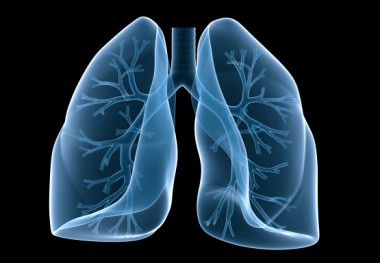Chronic respiratory failure is defined by the inability of the lungs normally ensure oxygenation of the arterial blood. The result is an arterial hypoxia. The finding of a PaO 2 ≤ 60 mmHg sign a basic IRC.
IRC A- A STEADY STATE:
1- COPD:
– Basic hypoxemia (by shunting)
– Hypercapnia (by alveolar hypoventilation present in advanced disease)
– PH maintained normal renal adaptation (respiratory acidosis compensated): increased tubular reabsorption of bicarbonates (chronic hypercapnia).
– Increasing labor respiratory muscles
– Desensitization of bulbar respiratory centers to hypercapnia stimulus
– Hypoxia becomes the main stimulus
– Hypoxic pulmonary vasoconstriction with PAH more or less fixed, precapillary (elevation precapillary pulmonary pressures without increasing the occlusion pressure)
– Polycythemia secondary to hypoxia
2- IRC RESTRICTION:
– Infringement of the interstitium: abnormal diffusion with hypoxemia effort initially and basic hypoxemia (advanced disease)
– Infringement of the chest wall: especially alveolar hypoventilation
B- etiologies of IRC:
1- obstructive IRC:
These obstructive pulmonary obstructive chronic bronchitis; Asthma continuous dyspnea; emphysema;
Aside: bronchiectasis (DDB) and cystic fibrosis
2- restrictive IRC:
– Infiltrative diseases of the lung (chronic interstitial disease: pulmonary fibrosis …)
– Violations of the chest: chest deformities; pleural disease; neuromuscular disease.
3- IRC pulmonary vascular disease:
– Chronic pulmonary heart (CPC) post embolic
– Primary pulmonary hypertension.
C- LONG-TERM OXYGEN:
1- Indications:
– PaO2 ≤ 55 mmHg at baseline (verified at least 2 months away from acute decompensation)
– PaO2 ≤ 60 mmHg if there are signs of right heart failure, polycythemia, nocturnal desaturation.
– Essential Fact: chronic no-shows hypercapnia against the long-term oxygen therapy.
2- ways:
– This is a priori lifelong treatment
– The duration must always be at least 15 hours a day
– The O2 flow must be adapted to obtain a PaO2 ≥ 70 mmHg without increase PaCO2 (one starts with a flow rate of 1L / min)
D- DECOMPENSATION ACUTE COPD:
– In case of aggravation of the burden on the respiratory muscles, decompensation means: the exhaustion of the diaphragm, the use of inspiratory accessory muscles (SCM external intercostals); active expiration with the contraction of the abdominals.
– Consequence on gas exchange
* The dramatically worsening alveolar hypoventilation
* Hypercapnia is most aggravated compared to baseline
* Hypoxaemia also worsened relative to baseline
* Respiratory acidosis is decompensated with a decreased pH (kidney adaptation possibilities are exceeded) despite bicarbonates ++.
– Hemodynamic failure by increasing PAH (IVD); the importance of hypoxia may be responsible for neuropsychiatric signs.
– Sweats associated with hypercapnia
– HTA or rarely collapse; it does not (generally) shock sign.
– Disorders of consciousness: drowsiness, coma or agitation and asterixis -> intubation and mechanical ventilation in emergency.
– It is the clinical tolerance that determines the therapeutic approach in emergency
– Mechanical ventilation is the best treatment for the rest of the respiratory muscles, a proper oxygenation with hemodynamic improvement, frequent bronchial aspirations, freeing the airway.
– Non-invasive ventilation by face mask avoiding endotracheal intubation for mechanical ventilation in the absence of impaired consciousness and exhaustion.
– Low-flow nasal O2 (0.5 to 1 L / min) to avoid worsening hypercapnia (risk of oxygen at high flow rate) in chronic hypercapnia.
Indications of mechanical ventilation:
* Respiratory Exhaustion (weak chest expansion, paradoxical breathing, ineffective cough)
* Impaired consciousness, asterixis
* Hypotension or shock
* Respiratory acidosis not quickly improved medical treatment (pH <7.30 persistent)


You must be logged in to post a comment.